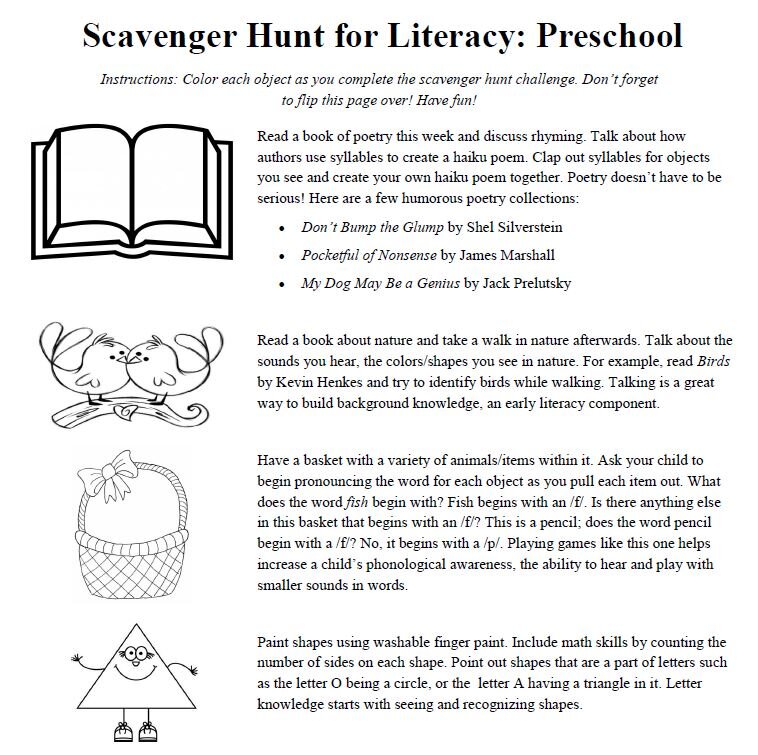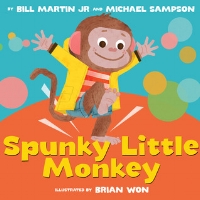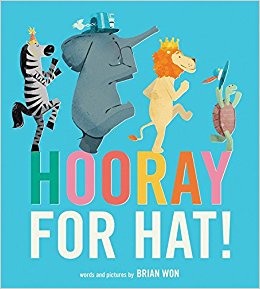Scavenger hunts are a fun activity for parents/caregivers and children to do together. I have developed one for Toddlers and one for Preschoolers. Each one is two-sided.
Toddlers
Preschoolers
Early Literacy Tip—Empower
We have talked about different aspects of early literacy in our storytime. Here is a scavenger hunt you can do here at the library or throughout the week. These activities help develop all aspects of early literacy, helping your child be ready to learn to read. I look forward to seeing your scavenger hunt sheets next time you are here!
Amber Jarvis, Children’s Specialist, Moyock Public Library (NC)






